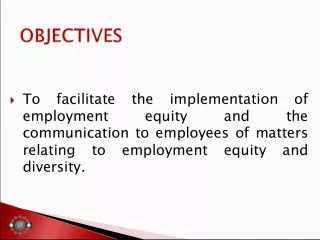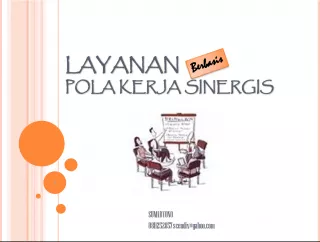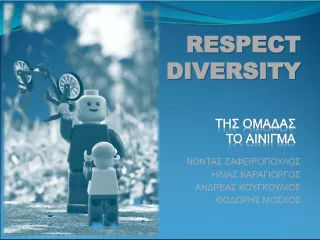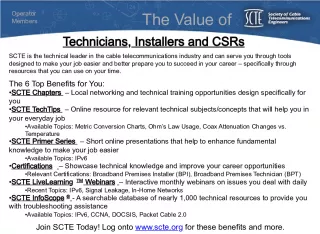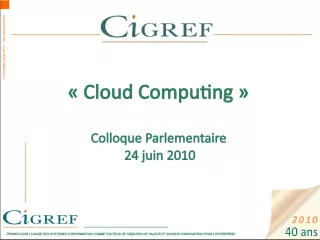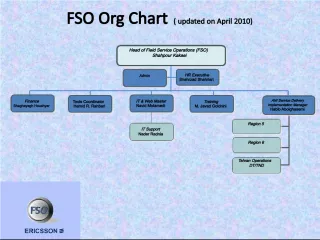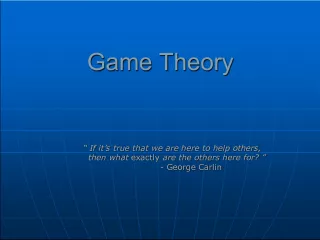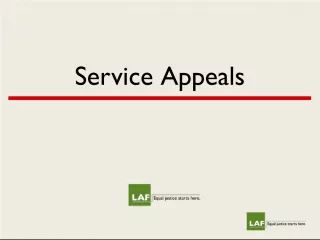Navigating Diversity in Customer Service
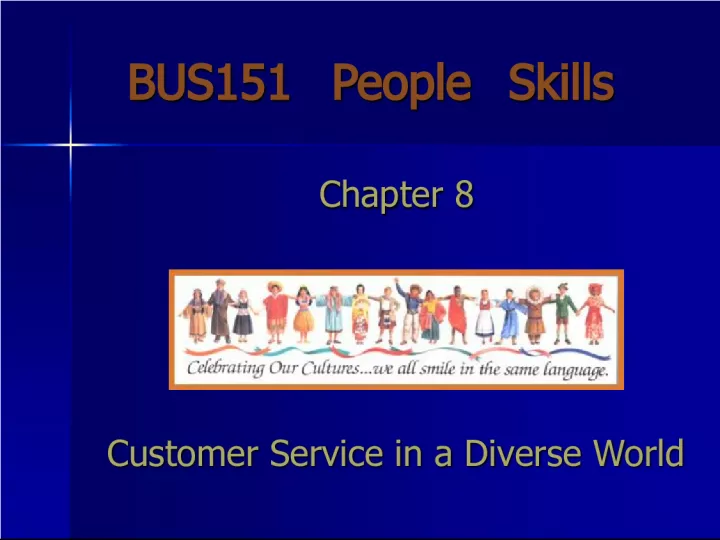

Learn how to provide exceptional customer service in a diverse world, understanding the complexities and nuances of diversity beyond just cultural differences. Gain essential people skills to ensure fair treatment and an open-minded approach when dealing with customers from all walks of life.
- Uploaded on | 0 Views
-
 dirkkreiger
dirkkreiger
About Navigating Diversity in Customer Service
PowerPoint presentation about 'Navigating Diversity in Customer Service'. This presentation describes the topic on Learn how to provide exceptional customer service in a diverse world, understanding the complexities and nuances of diversity beyond just cultural differences. Gain essential people skills to ensure fair treatment and an open-minded approach when dealing with customers from all walks of life.. The key topics included in this slideshow are diversity, customer service, cultural differences, people skills, open-minded approach,. Download this presentation absolutely free.
Presentation Transcript
1. BUS151 People Skills BUS151 People Skills Chapter 8 Chapter 8 Customer Service in a Diverse World Customer Service in a Diverse World
2. Diversity Diversity Diversity encompasses a broad range of differences. Most people associate the term diversity with the word cultural, which has to do with the differences between groups of people depending on their country of origin and their beliefs. Diversity is not just cultural. Many other characteristics are also involved. Diversity is not a simple matter, yet it is not difficult to deal with, if you are fair to people and keep an open mind.
3. Diversity Diversity When you look closely at, and think about, diversity, it provides wonderful opportunities because people from varying groups bring with them special knowledge, experience , and value. When you look closely at, and think about, diversity, it provides wonderful opportunities because people from varying groups bring with them special knowledge, experience , and value. Even though people have differences, they have many traits in common. Even though people have differences, they have many traits in common.
4. Diversity Diversity Factors that make us unique are learned or gained; for example, religion, values, beliefs, economic level, lifestyle choices, profession, marital status, education, and political affiliation. These factors are also used to assign people to categories. Caution must be used when considering any of these characteristics since grouping people can lead to stereotyping and possibly discrimination.
5. The Impact of Cultural Values The Impact of Cultural Values Specific cultural values are often taught to members of particular groups starting at a very young age. These values dictate which behaviors and practices are acceptable or unacceptable. Many service providers take values for granted, which is a mistake. Values are the rules that people use to evaluate issues or situations, make decisions, interact with others, and deal with conflict. Values can affect your interactions with your customers in a variety of ways.
6. The Impact of Cultural Values The Impact of Cultural Values The goal is to provide service to the customer. In order to achieve success in accomplishing this goal, service providers must be sensitive to, tolerant of, and empathetic toward customers. You do not have to adopt the beliefs of others, but you should adapt to them to the extent that you provide the best service possible to all of your customers.
7. Modesty Modesty Modesty is exhibited in many ways, from conservative dress by women, to covering the mouth with an open hand, to avoiding eye contact. A customer may exhibit suspicious behavior. Instead of assuming that the customer is evasive or dishonest, consider the possible impact of culture. Dont force the issue or draw undue attention to a customers behavior. Instead, continue to verbally probe for customer needs and address them. Provide the same quality of friendly service.
8. Expectations of Privacy Expectations of Privacy You should be aware that disclosing personal information about oneself is often a cultural factor and that expectations of privacy vary. According to research, people who are British, German, Australian, Korean, or Japanese display a tendency to disclose less about themselves. If you tend to speak freely about any topic, you should curtail this tendency in the customer service environment. Keep your conversations centered on satisfying the customers needs. Still small talk, just keep it under control and watch customer reactions closely.
9. Forms of Address Forms of Address Although Americans often pride themselves on their informality, people from other countries see informality as rudeness, arrogance, or overfamiliarity. Many cultures stress formality in the business environment and place importance on the use of titles and family names when addressing others. If you start a conversation with someone and immediately alienate the person by incorrectly using his or her name, you may not be able to recover. This may send a message of lack of knowledge or concern for the customer as an individual.
10. Respect for Elders Respect for Elders In most cultures, some level of respect is paid to older people. In many cultures, age brings with it unique privileges and rights. You must be careful to pay appropriate respect when speaking to older customers. If a customer demands to speak to a senior person or to the manager or owner, he or she may be simply exhibiting a customary expectation for his or her generation. If you can assist without conflict, do so; if not, honor the request when possible.
11. Important of Relationships Important of Relationships In many Asian, Latin American, and Middle Eastern cultures, the building of a strong interpersonal relationship is extremely important before business is conducted. Dinner or office meetings often occur for weeks before an agreement is reached. When you will be having ongoing contact or be doing business, follow the customers lead. Get to know them and build mutual respect and trust. You may find that you have to spend time at the beginning of each encounter with your established customer to reestablish the relationship.
12. Gender Roles Gender Roles Culturally, and individually, people view the role of men and women differently. Decision-making and authority are often clearly established as male prerogatives without a culture, subcultures, or family. In some countries, women are expected to be seen and not heard, and to remain out of business transactions. You dont have to agree with this behavior, but you will need to take it into consideration when facing it in customer encounters.
13. Attitude Toward Conflict Attitude Toward Conflict Many attitudes toward conflict are rooted in the individuals culture or subculture and based on behavior style preference as discussed in Chapter 6. By recognizing your biases and preferences, and being familiar with those of people of other cultures, you can reduce the potential for disagreement. If you use the wrong strategy, emotions could escalate and customer dissatisfaction could follow. The key is to listen and remain calm, especially if the customer becomes agitated.
14. The Concept of Time The Concept of Time Monochronic Tend to do one thing at a time. Take time commitments seriously. Often focus on short-term projects or relationships. Adhere closely to plans. In relation to time, people and societies are often referred to as being either monochronic or polychronic. Polychronic Used to distractions. Juggle multiple things without stress. Consider time as a guide and flexible commodity. Work toward long deadlines. Base promptness on relationships. You must observe time rules in order to project an appropriate image and to satisfy the needs of your customers and organization.
15. Ownership of Property Ownership of Property In many cultures, ownership of property, or accumulation of worldly goods or wealth, is frowned upon. People have differing levels of needs. Ask customers what their needs are and listen to their responses. Dont persist in upgrading a customers request to a higher level or more expensive product if he or she declines your suggestion. You may offend and lost a customer.
16. Customers With Language Differences Customers With Language Differences One major obstacle for service providers in the United States is that many adult Americans believe that just over 50% of the worlds population speaks English. Based on findings, the number is closer to 20%. Since you are likely to encounter customers from virtually any country in the world, you need to be prepared. You need to have a way to use alternative methods or strategies for providing service.
17. Strategies for Dealing with Language Differences Strategies for Dealing with Language Differences Let your customer guide the conversation. Be flexible and listen patiently. Speak clearly and slowly, and at a normal volume and tone. Use open-ended questions and use questions carefully. Pause frequently. Use standard English. Use globally understood references. Be conscious of nonverbal cues. Paraphrase the customers message. Try writing your message. Avoid humor and sarcasm Look for positive options. Be less critical. Use a step-by-step approach. Keep your message brief. Check frequently for understanding. Keep smiling.
18. Customers with Disabilities Customers with Disabilities According to the U.S. Census Bureau, approximately 50 million (1 in 5) American over the age of five and no institutionalized have some level of disability. These numbers are projected to continue to grow as the population ages. Some customer service professionals are uncomfortable working with customers with disabilities because they have had little prior exposure to people. . In most cases, customers who have disabilities do no want to be treated differently; they want to be treated equally . Be familiar with the 1990 Americans With Disabilities Act (ADA) and other legislation passed by Congress.
19. Hearing Disabilities Hearing Disabilities Provide written information and instructions. Use pictures, objects, diagrams, etc. to communicate. Use nonverbal cues. Use facial expressions and gestures. Face the person directly. Enunciate your words so they can see your mouth form words. Check for understanding frequently by using open- ended questions to which the customer must provide descriptive answers. Communicate in a well- lighted room when possible. Watch backlighting, which may reduce the ability to see your mouth. Reduce background noise.
20. Vision Disabilities Vision Disabilities Talk to a visually impaired person the same way you would talk to someone else. Do not raise your voice. Do not feel embarrassed or change your vocabulary. If appropriate, ask how much sight he or she has and how you can best assist. If customer has a guide dog, do not pet, feed, or otherwise distract the animal without the owners permission. Speak to the person as he enters the room or approach the person so that he or she knows where you are. Give very specific instructions and directions. If you are seating the person, face him or her away from bright lights. When walking with someone who is blind, offer your arm. Speak directly to the customer.
21. Mobility or Motion Impairment Mobility or Motion Impairment Prior to a situation in which you may have to accommodate someone who uses a walker, wheelchair, crutches, or other device, note areas where space is inadequate. . Do not push or lean on wheelchair without permission . Make sure you place information or materials at a level that makes it possible for the person to see without undue strain. . Sit or stand where you can make direct eye contact .
22. Elderly Customers Elderly Customers Be respectful. Be patient. Answer questions. Try not to sound patronizing. Remain professional. Guard against biases. Communicate effectively Face the person. Talk slowly and enunciate world clearly. Keep your hands away from your mouth. Talk without food or gum. Reword statements or ask questions again. Be positive, patient, and practice good listening skills.
23. Younger Customers Younger Customers Generation X (born 1964-1977) Generation Y (following Generation X) Known as Nexters, MTV generation, millennial generation, cyberkids. Financially, this group accounts for billions of dollars in business revenue. They are a spending force to be reckoned with, and marketers are going after them with a vengeance. Depending on your age, your attitude will vary. Avoid demeaning language and condescending forms of address such as kit, sonny, sweetie, or sugar. Take time to explain technical points.
24. Communicating with Diverse Customers Communicating with Diverse Customers Use general terms. Be careful with your remarks and jokes. Respect personal preferences when addressing people Make sure that your language is inclusive. Recognize the impact of words. Use care with nonverbal cues.
